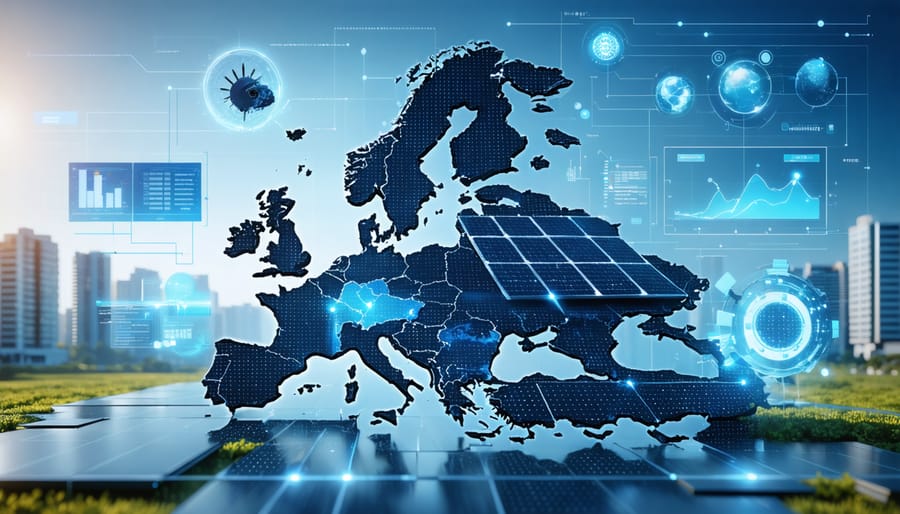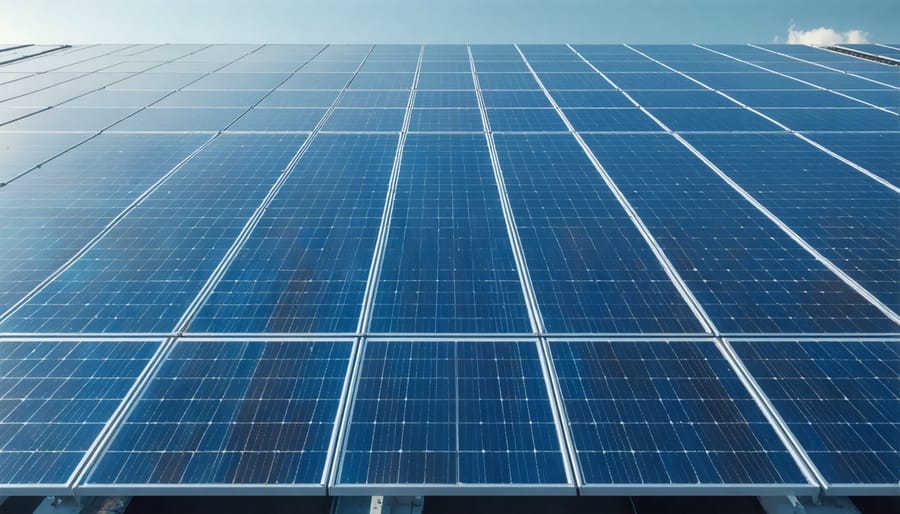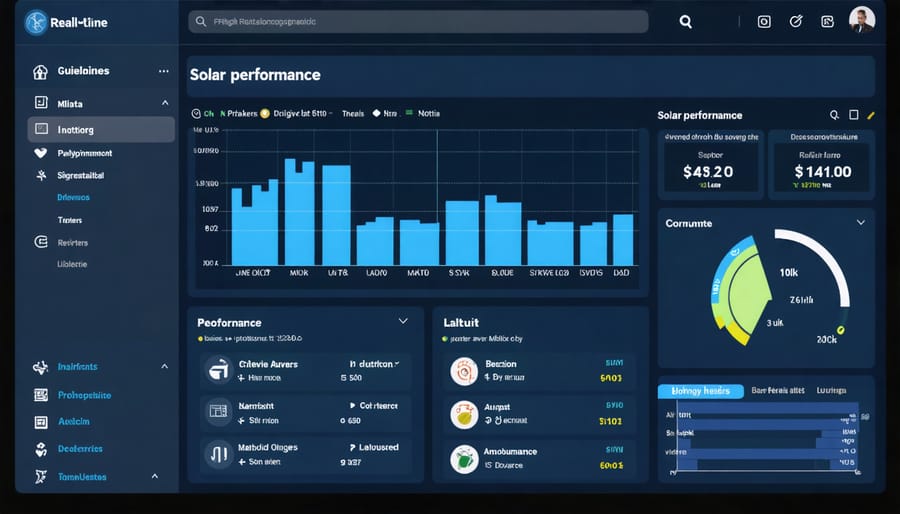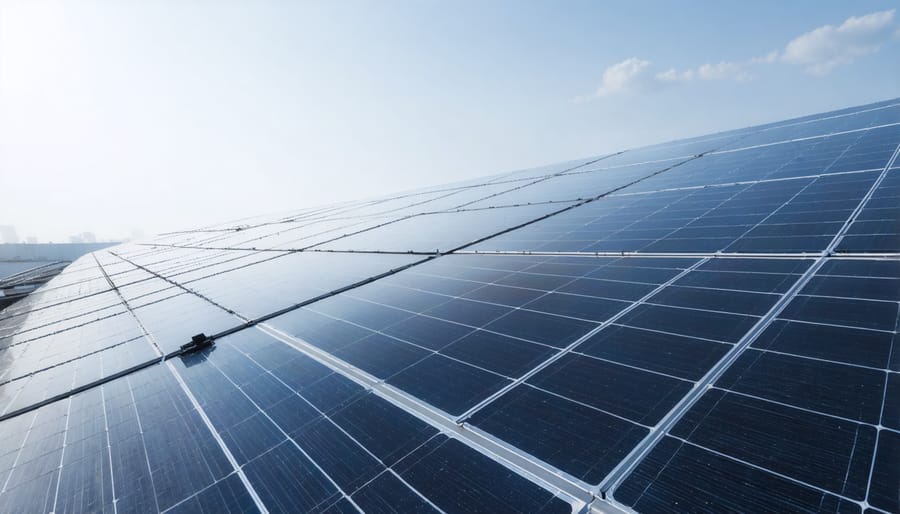How Smart Solar Technology Is Revolutionizing European Project Management

Solar energy technology stands at the forefront of Europe’s renewable revolution, with breakthrough innovations transforming how we harness, store, and distribute solar power. Recent advancements in photovoltaic efficiency have pushed panel performance beyond 25%, while innovative bifacial modules capture both direct and reflected sunlight, dramatically increasing energy yield in diverse installation settings.
Smart integration systems now seamlessly connect solar installations with AI-powered management platforms, enabling real-time optimization and predictive maintenance across residential and industrial applications. These technological leaps aren’t just improving performance – they’re reshaping the economics of solar adoption throughout the European market.
From ultra-thin perovskite cells achieving remarkable efficiency gains to advanced energy storage solutions that ensure consistent power delivery, today’s solar technologies offer unprecedented reliability and return on investment. For European businesses and homeowners, these innovations represent a crucial step toward energy independence and sustainability, supported by sophisticated project management tools that streamline implementation and maximize long-term performance.
As we witness this solar technology renaissance, the convergence of hardware improvements and intelligent software solutions is creating opportunities that were unimaginable just a decade ago, positioning solar energy as a cornerstone of Europe’s sustainable energy future.
AI-Powered Solar Design and Planning
3D Modeling and Site Assessment
Modern 3D modeling and site assessment technologies have revolutionised the planning phase of solar installations across Europe. Advanced LiDAR (Light Detection and Ranging) systems, combined with high-resolution aerial imagery, create precise digital twins of potential installation sites, enabling detailed analysis before any physical work begins.
These sophisticated mapping tools can automatically detect obstacles, measure roof angles, and calculate optimal panel placement while considering local weather patterns and seasonal sun paths. The technology evaluates factors such as shadowing from nearby structures, vegetation growth patterns, and potential future obstructions that could impact solar performance.
Artificial Intelligence-powered software now processes this data to generate comprehensive site reports within hours, a task that previously took weeks of manual assessment. These tools can simulate annual energy production with remarkable accuracy, accounting for variables such as local climate data, panel efficiency, and system configurations.
For European property owners, this technological advancement means more precise quotations and better-informed decision-making. The visualisation capabilities allow clients to see exactly how their solar installation will look and perform before making any commitments. Moreover, these tools help installers identify potential challenges early in the project lifecycle, reducing unexpected complications during installation.
The integration of these technologies with project management platforms ensures that all stakeholders have access to accurate, up-to-date site information throughout the project’s duration, promoting transparency and efficient collaboration.
Smart Design Optimization
Modern solar installations are becoming increasingly sophisticated through the integration of AI-powered optimization techniques that revolutionize system design and performance. These intelligent algorithms analyze multiple variables, including roof geometry, shading patterns, and local weather data, to determine the most efficient panel placement and system configuration.
The software considers factors such as optimal tilt angles, row spacing, and inverter positioning to maximize energy yield while minimizing installation costs. In European installations, these smart design tools have demonstrated energy production improvements of up to 20% compared to traditional planning methods.
Machine learning algorithms continuously adapt to real-world performance data, refining their recommendations based on actual system behavior. This dynamic optimization process ensures that new installations benefit from the collective experience of thousands of existing solar projects across Europe.
For complex commercial installations, these design tools can simulate hundreds of possible configurations within minutes, accounting for specific building codes and local regulations. They also factor in future considerations, such as the potential addition of energy storage systems or the integration of electric vehicle charging stations.
The technology particularly excels in urban environments, where space constraints and shading from neighboring structures pose significant challenges. By precisely modeling sun paths and shadow patterns throughout the year, these systems ensure optimal energy harvesting even in less-than-ideal conditions.

IoT Integration in Solar Systems
Real-time Performance Monitoring
Modern solar installations are increasingly equipped with sophisticated real-time performance monitoring systems that transform how we manage and optimize solar energy production. These smart monitoring solutions utilize advanced sensors and IoT technology to continuously track essential parameters such as power output, panel temperature, and environmental conditions.
Each solar panel can be fitted with intelligent sensors that measure voltage, current, and operating temperature, while weather stations monitor local conditions affecting performance. This data is transmitted to central monitoring platforms, enabling system operators to assess performance metrics instantly and identify potential issues before they impact energy generation.
The integration of artificial intelligence and machine learning algorithms has revolutionized how this data is analyzed. These systems can predict maintenance needs, detect performance anomalies, and automatically adjust system settings for optimal efficiency. For instance, when sensors detect dust accumulation or partial shading, the system can alert maintenance teams or adjust individual panel orientations to maximize energy capture.
European solar installations particularly benefit from these advanced monitoring capabilities due to varying weather conditions across the continent. Facility managers can access comprehensive dashboards through web interfaces or mobile applications, providing real-time insights into system performance, energy production forecasts, and maintenance schedules.
These monitoring systems also support compliance with European energy regulations by maintaining detailed performance records and generating automated reports. This data-driven approach ensures maximum return on investment while contributing to the EU’s renewable energy targets through optimized solar energy production.

Predictive Maintenance Solutions
Modern solar installations are becoming increasingly intelligent thanks to advanced predictive maintenance solutions that revolutionise how we monitor and maintain solar energy systems. These innovative technologies combine artificial intelligence, IoT sensors, and sophisticated analytics to detect potential issues before they become problematic.
Smart monitoring systems continuously collect data on panel performance, electrical output, and environmental conditions. This real-time information is analysed to identify patterns that might indicate developing faults or efficiency degradation. For instance, these systems can detect subtle changes in power output that might suggest panel soiling, connection issues, or early component wear.
The implementation of machine learning algorithms has particularly enhanced maintenance scheduling. These systems learn from historical performance data and weather patterns to optimise cleaning schedules and predict when components might need replacement. This proactive approach significantly reduces downtime and maintains optimal system efficiency.
For European solar installations, these solutions are particularly valuable given the region’s diverse weather conditions. Advanced weather monitoring integration helps systems adapt maintenance schedules according to local conditions, whether dealing with snow in the Alps or sand in Mediterranean regions.
The economic benefits are substantial: predictive maintenance can reduce operational costs by up to 30% while increasing system lifetime by 20-25%. These systems also support remote monitoring and automated alert systems, enabling quick response to potential issues even in large-scale installations.
Furthermore, modern predictive maintenance platforms often include user-friendly interfaces that provide clear visualisations and actionable insights, making it easier for both technical teams and system owners to understand and manage their solar installations effectively.
Smart Grid Integration Technologies
Advanced Inverter Systems
Modern inverter systems represent a significant leap forward in solar energy technology, offering unprecedented levels of control, efficiency, and grid integration capabilities. These advanced devices not only convert DC power from solar panels into grid-compatible AC power but also serve as intelligent energy management systems.
Today’s smart inverters incorporate sophisticated monitoring and communication features that enable real-time performance tracking and remote system management. They can automatically adjust power output based on grid conditions, helping maintain stable electricity supply and preventing potential network issues. This functionality is particularly valuable in European markets, where grid stability and power quality standards are stringent.
A key innovation in current inverter technology is the implementation of power optimisation at the module level. This allows each solar panel to operate at its peak efficiency, regardless of partial shading or module variations, resulting in up to 25% more energy yield from existing installations.
The integration of artificial intelligence and machine learning algorithms enables predictive maintenance and enhanced system diagnostics. These systems can forecast potential issues before they occur, reducing downtime and maintenance costs while extending system longevity.
For European businesses and homeowners, these advanced inverter systems offer the additional benefit of seamless integration with energy storage solutions and smart home systems, providing greater energy independence and consumption control. The technology also supports participation in emerging energy markets, allowing users to benefit from dynamic pricing and grid services opportunities.
Energy Storage Integration
Energy storage integration has become a cornerstone of modern solar installations, revolutionising how we harness and utilise solar power. Smart battery systems now offer unprecedented control over energy management, allowing European households and businesses to maximise their solar investment through intelligent storage solutions.
Advanced lithium-ion batteries, coupled with sophisticated management systems, enable property owners to store excess solar energy generated during peak sunlight hours for use during evenings or cloudy days. These systems automatically analyse consumption patterns and weather forecasts to optimise charging and discharging cycles, ensuring maximum efficiency and cost savings.
The integration of smart inverters with battery storage systems creates a seamless energy ecosystem. These devices communicate in real-time, adjusting power flow based on current demands and grid conditions. For instance, during peak tariff periods, the system can automatically switch to stored power, reducing reliance on expensive grid electricity.
European manufacturers have developed innovative thermal storage solutions that complement traditional battery systems. These solutions convert excess solar energy into heat, stored in specially designed materials or water tanks, providing an efficient way to meet heating and hot water needs.
Most modern storage systems now come with user-friendly monitoring applications, allowing owners to track energy production, storage levels, and consumption patterns through their smartphones or computers. This transparency helps users make informed decisions about their energy usage and maximise their return on investment.
Project Management Software Innovation
Digital Twin Technology
Digital twin technology represents a groundbreaking advancement in solar energy system management, offering a virtual replica of physical solar installations. This innovative approach enables system operators and managers to simulate, monitor, and optimise solar energy operations in real-time, revolutionising how we plan and maintain solar projects across Europe.
By creating detailed virtual models, operators can analyse performance data, predict maintenance needs, and simulate various scenarios without physical intervention. For instance, a solar farm in Germany might use digital twin technology to simulate different weather conditions and their impact on energy production, allowing for proactive adjustments to maximise efficiency.
The technology integrates multiple data sources, including weather forecasts, historical performance metrics, and real-time sensor data, creating a comprehensive virtual environment. This integration enables precise performance predictions and helps identify potential issues before they affect system operation.
For European businesses and homeowners, digital twin technology offers particular value in system planning and optimisation. Users can virtually test different panel configurations, anticipate shading issues, and calculate expected energy yields with unprecedented accuracy. This capability significantly reduces investment risks and improves return on investment calculations.
The technology also supports predictive maintenance strategies, helping operators schedule servicing at optimal times and reduce operational costs. As solar installations continue to grow across Europe, digital twin technology is becoming an essential tool for ensuring maximum system efficiency and reliability.

Automated Workflow Systems
Modern solar energy projects benefit significantly from automated workflow management systems that streamline operations and enhance project efficiency. These digital solutions integrate various aspects of solar installations, from initial planning to ongoing maintenance, creating a seamless operational environment.
Advanced project management platforms now offer real-time monitoring capabilities, allowing installers and operators to track multiple installation phases simultaneously. These systems automatically generate work orders, schedule maintenance tasks, and coordinate team activities, significantly reducing administrative overhead and human error.
European solar providers are increasingly adopting smart scheduling tools that optimize resource allocation and workforce deployment. These systems use artificial intelligence to predict installation timeframes, adjust for weather conditions, and manage equipment logistics, ensuring projects stay on schedule and within budget.
Digital documentation and compliance tracking have become integral components of modern solar installations. Automated systems maintain detailed records of permits, inspections, and certifications, while ensuring adherence to regional regulations and industry standards. This digital approach has proven particularly valuable in meeting the stringent requirements of European energy regulations.
Integration with mobile applications enables field technicians to access project information, update installation progress, and communicate with project managers in real-time. This connectivity ensures swift problem resolution and maintains project momentum, ultimately leading to faster deployment of solar energy solutions.
The technological advancements in solar energy are reshaping the landscape of project management across Europe, offering unprecedented opportunities for efficiency and sustainability. With smart monitoring systems, AI-driven analytics, and improved solar panel technologies, project managers can now deliver more reliable and cost-effective solar installations. These innovations are particularly significant for the European market, where ambitious renewable energy targets drive the need for sophisticated solar solutions. The integration of digital tools with hardware improvements has created a comprehensive ecosystem that supports everything from initial planning to long-term maintenance. As these technologies continue to evolve, we can expect even greater optimization of solar projects, reduced installation costs, and improved energy yields. This technological revolution is not just transforming how we harness solar power; it’s accelerating Europe’s transition to a sustainable energy future while making solar energy more accessible and manageable for businesses and homeowners alike.
Leave a Reply